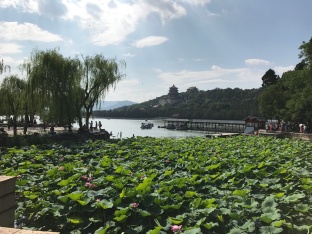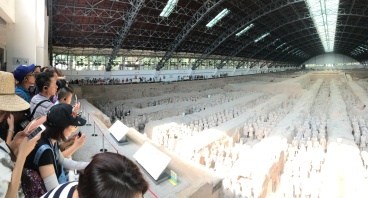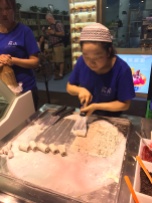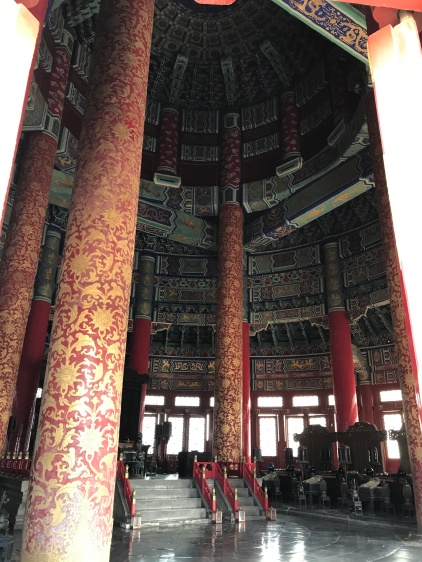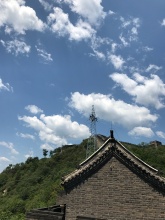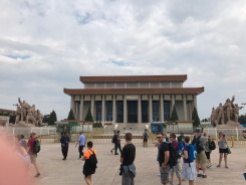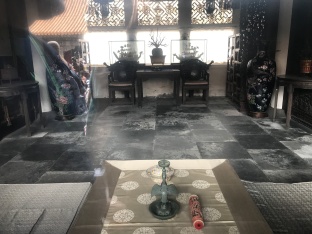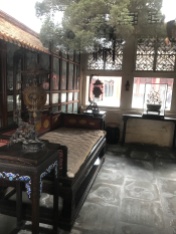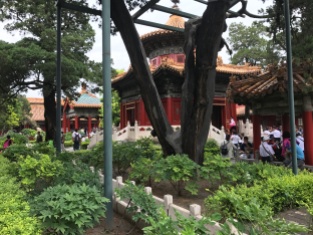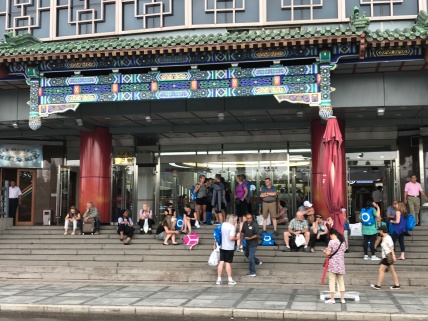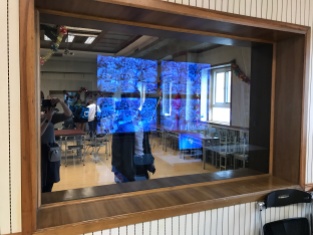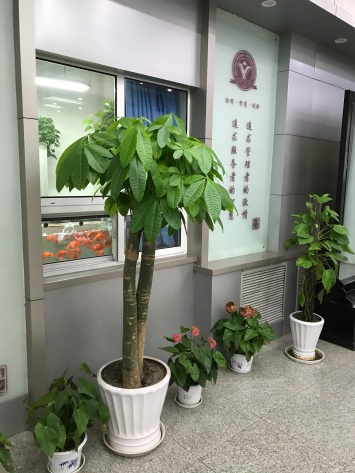I’m not sure it’s possible to capture all I have seen, heard, smelled, tasted, and touched during this journey to China. There are so many thoughts swirling through my head, it’s difficult to even know where to begin, so I will default to the NEA Foundation and their guidance to begin this discussion. Twice during our trip, as a group of Global Teaching Fellows we had the opportunity to debrief our experiences. During the first debrief, after visiting the Great Wall, we were asked about our pre-conceived ideas about China prior to our arrival and how those notions were challenged in our first few days in country. In the US, we are shown an image of oppression and profound crowding whenever we are confronted with images of this nation. I expected Chinese citizens to have little freedom, and with that, limited happiness.
My assumptions were immediately challenged. Yes, the city of Beijing is bustling, trams are crowded, and traffic is thick, but space is not at a premium here. While China boasts one of the largest populations in the world, freedom of movement is prevalent. There is a concentration of people in the cities, but the nation itself is huge and each town has its own flavor, with varying landscapes and ways of life. It is true that personal space is not as valued in China as it is in the US, so personal bubbles aren’t generally respected, but there is room to move and people are kind and accommodating.
Along the lines of freedom, I also had the idea the Chinese government would be oppressive. While there are clear expectations and boundaries, in many ways, Chinese citizens are freer than we are in the United States. I know that statement is hard for some to take, but hear me out. In the US we have freedom of movement, we can travel, we can do and say what we want. On the surface it appears as if we are free. After all, it’s written in our constitution, right? But there is so much happening underneath. Our oppression comes in the form of judgment and the desire to control one another and to determine what is best for others, based on our own beliefs and values.
In China, while there is a distinct class system, with little upward mobility, and there is limited freedom in speaking, there is incredible freedom in being. The Chinese are extremely accepting. They are open and curious and unashamed of their curiosity. There is true freedom of religion in China and, despite the homogeneity of the citizens, they welcome foreigners and praise their differences. Women have the right to choose (which I will allow has a lot to do with birth limits, but nonetheless), women are not shamed for their choices concerning their own bodies, and homosexuality is accepted and has been for centuries, although same sex marriage is not yet legal in China.
I recognize that there are limits in freedom in China. I also recognize that we are very free in the United States, at least outwardly. However, the freedom to be without other people judging or trying to change you is extremely powerful and something I wish we in the United States could recognize and learn. I believe the Chinese are able to accept difference because they are a group culture, in which the community is elevated above the individual. In the US the individual is valued above the group, which causes us to care about our own opinions and beliefs above others. It is difficult to be compassionate when we are taught to care mainly about ourselves. I’m sure these are controversial ideas. What are your thoughts?
The second question we debriefed was a challenge we had to overcome during our visit to China. Mine was a cultural challenge. As an American, I am often in a hurry and everything is a challenge, a competition of sorts. We tend to set a goal and work to achieve that goal – we focus in, and, as a result, sometimes forget to look around and enjoy the experience. This was particularly challenging on the Great Wall. We had limited time on the wall and a great deal of ground to cover. I had to make the conscious decision to not worry about making it to the top or worry about making sure I walked the entire length of the section. I forced myself to slow down and really experience the journey. It didn’t matter that I wasn’t going to have a photo at the top. What mattered was that I was there, I was present, I allowed the experience to wash over me and through me and to really enjoy every moment. I hope to take this lesson back to the states with me – slow down, look around, life passes quickly, it’s important to enjoy it.
Finally, in our last debrief of the trip we discussed global teaching and learning and how we can bring our experiences into our schools and classrooms. We decided that we need to be leaders and teachers to both our students and our colleagues in three main areas: 1. To be compassionate and empathetic – to recognize our own biases and ideas, put them in check and be open to new experiences; 2. Travel – see things, go places, even if it’s only as far as the other side of the city – seek out new experiences; and 3. Be reflective – not only of your experiences, but also of yourself – strive to learn from your experiences and expand your horizons.
My journey to China was so much more than I ever expected. The people are kind and courteous and aren’t afraid to ask questions and ask for a photo or two. The land is beautiful and there is so much green space. The history is deep and so very interesting – I need to come back and explore some more – we only touched the tip of the iceberg.
The following are a few more views of China, the food, the people, the culture. Thanks for following along with me on this adventure.










